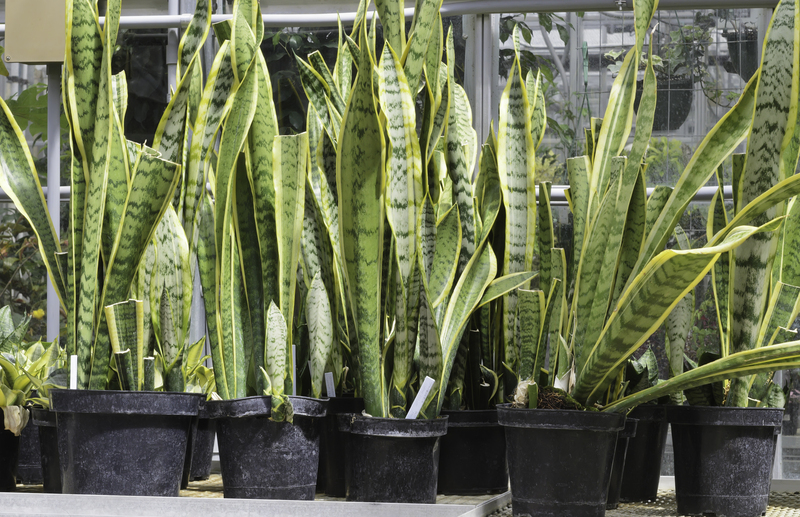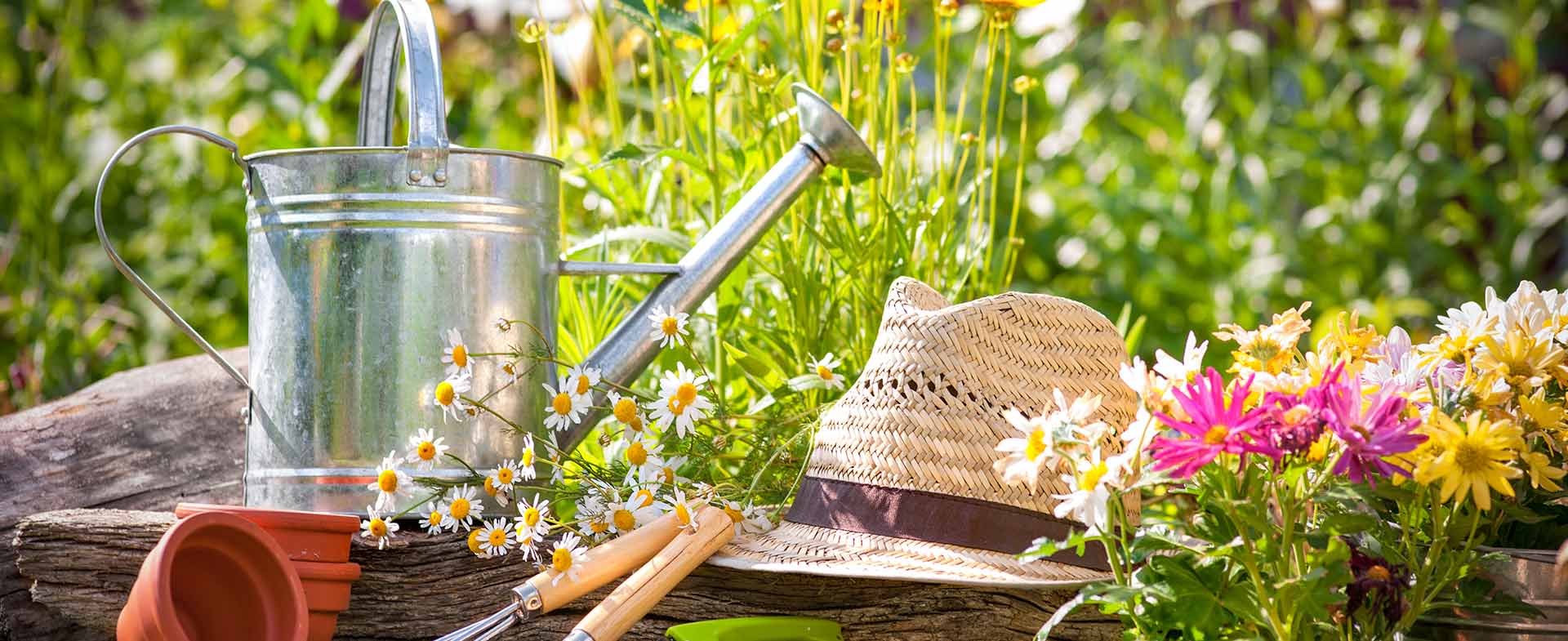Discover the art of vertical gardening
Posted on 25/06/2025
Discover the Art of Vertical Gardening
Vertical gardening is an innovative and versatile approach to growing plants upward rather than outward. As cities become more crowded and living spaces shrink, this artful gardening technique offers a stylish and practical solution for homeowners, apartment dwellers, and businesses wishing to bring greenery into their lives without sacrificing valuable square footage. In this comprehensive guide, you'll explore the world of vertical gardening, its benefits, and how to get started, along with tips for choosing the best plants and creative design inspiration.
What is Vertical Gardening?
At its core, vertical gardening involves cultivating plants on structures that rise above the ground. These can range from simple DIY trellises to sophisticated living plant walls. Vertical gardens are also referred to as living walls, green walls, or plant walls. Whether you're looking to grow flowers, herbs, veggies, or even fruits, vertical gardens enable you to maximize your growing space vertically, transforming blank walls or unused corners into lush, vibrant oases.
Brief History of Vertical Gardens
The origins of vertical gardening can be traced back to the famous Hanging Gardens of Babylon, one of the Seven Wonders of the Ancient World. In modern times, the concept evolved with the impressive "living wall" installations by French botanist Patrick Blanc in the late 20th century. Today, the technique continues to evolve, adapting to current needs for both indoor and outdoor spaces.

Why Choose Vertical Gardening?
Vertical gardening is more than just a trend; it's a smart, sustainable gardening method with multiple benefits for individuals, communities, and the environment. Here's why people are falling in love with vertical gardens:
Key Benefits of Vertical Gardening
- Space Efficiency: Perfect for those with limited ground area, vertical gardens allow for a lush garden in places where traditional gardening isn't possible.
- Improved Air Quality: Green walls act as natural air filters by absorbing pollutants and releasing fresh oxygen.
- Natural Insulation: Living walls can help regulate building temperatures, reducing energy use for heating and cooling.
- Urban Aesthetics: Transforming a drab wall or balcony into a plant-filled masterpiece increases curb appeal and adds value to your property.
- Biodiversity: Vertical gardens attract beneficial insects and birds, improving local biodiversity.
- Stress Reduction: Surrounded by greenery, people often feel calmer and happier, which can boost productivity and mental well-being.
- Maximized Yield: More plants in less space leads to greater harvests for edible gardens.
Getting Started: How to Create a Vertical Garden
Embarking on your vertical gardening journey is both exciting and rewarding. Before you plant your first seed, it's important to consider a few key factors.
1. Assess Your Space
Is your garden indoors, on a balcony, or in a backyard? Observe how much sunlight the location gets daily. Choose a spot close to a water source if possible, and ensure the wall or structure is strong enough to support the combined weight of plants, soil, and water.
2. Choose the Right Structure
There are many options when it comes to structures for a vertical garden:
- Freestanding frames
- Trellises and wire netting for climbing plants
- Pocket planters made of felt, fabric, or plastic
- Pallets and upcycled ladders
- Living wall panels with built-in irrigation for larger installations
*Tip: Reuse old shoe organizers, rain gutters, or even plastic bottles for a creative and eco-friendly vertical gardening solution.*
3. Select Suitable Plants
Your plant selection depends on light, climate, and vertical gardening structure. Some of the best options for vertical gardening include:
- Herbs: Basil, mint, oregano, chives, parsley
- Leafy greens: Lettuce, spinach, kale, arugula
- Flowers: Petunias, fuchsias, nasturtiums, pansies
- Vines: Ivy, morning glory, clematis, sweet peas
- Succulents: Sedum, echeveria, burro's tail
- Fruits & Vegetables: Strawberries, cherry tomatoes, peppers
Design Ideas for Beautiful Vertical Gardens
Express your creativity through various vertical gardening designs. Here are a few inspiring ideas:
Living Picture Frames
Create a green work of art by framing a mix of colorful succulents or small ferns in a shallow, wall-mounted container.
Pocket Plant Walls
Use felt pocket planters for herbs and greens in your kitchen or patio. These versatile vertical gardening tools can transform any bare wall into an edible garden within arm's reach.
Pallet Gardens
Recycle old pallets into rustic, vertical planters. After sanding and treating the wood, add landscape fabric or small pots, then plant flowers, herbs, or strawberries in the slots.
Trellised Flower Walls
Install a trellis and train flowering vines or climbing vegetables for a lush, living tapestry that changes with the seasons.
Hanging Gutter Gardens
Suspend horizontal strips of rain gutter on chains or cables from a fence or balcony railing. These make perfect planting troughs for shallow-rooted veggies or herbs, maximizing both style and space.
How to Maintain a Vertical Garden
A thriving vertical garden requires consistent care. Here are essential maintenance tips:
- Watering: Vertical gardens dry out faster than traditional beds. Use drip irrigation or self-watering planters for best results.
- Fertilization: Regular feeding promotes lush, healthy growth. Use dilute, organic liquid fertilizers suited to your plant choices.
- Pruning: Pinch or snip off overgrown, dead, or yellowing foliage regularly to maintain shape and vigor.
- Pest Management: Keep an eye out for pests. Use natural control methods like neem oil or insecticidal soap.
- Sunlight: Ensure plants are getting adequate light and rotate planters when necessary for even growth.
Vertical Gardening for Urban Spaces
Urban areas, with their high population density and limited ground space, are prime candidates for vertical gardening. Not only does this green solution beautify cityscapes, but it also enhances air quality and reduces the urban heat island effect.
Benefits for Apartments and Small Homes
- Maximizes small balconies, patios, or indoor corners
- Transforms walls into dynamic, living focal points
- Enables homegrown herbs, flowers, and edibles for fresh meals
- Offers privacy screens with thick foliage or vines
Inspiring Public and Commercial Green Walls
Many cities now feature impressive public vertical gardens, such as hotel facades, shopping mall entrances, and university campuses. These installations not only improve appearance but inspire communities to embrace eco-friendly vertical gardening practices.
Best Plants for Vertical Gardening
Choosing the right plants is essential for vertical garden success. Here are some top picks for different environments:
- Full Sun: Succulents, lavender, strawberries, cherry tomatoes
- Partial Shade: Ferns, impatiens, begonias, lettuce
- Low Light (indoor): Pothos, philodendron, snake plant, spider plant
- Low Maintenance: Sedum, echeveria, air plants
*Mix and match plants for year-round interest by combining evergreen, flowering, and edible varieties.*
Common Challenges and How to Overcome Them
1. Watering Issues
Vertical gardens can dry out quickly. Use self-watering planters or install a drip irrigation system to keep plants hydrated. Group together plants with similar water needs.
2. Weight Concerns
A fully established vertical garden can become heavy. Mount your structure on a sturdy wall, and consider lightweight soil mixes and planters.
3. Sun Exposure
Not all locations provide enough light. Supplement indoor gardens with grow lights, or select shade-tolerant plants for lower light areas.
4. Maintenance Access
Arrange your plantings so all areas are within reach for easy pruning and watering. Use modular panels for effortless plant replacement.
Environmental Impact of Vertical Gardens
Beyond their beauty, vertical gardening contributes to the planet's health by:
- Absorbing CO2 and air pollutants
- Improving urban biodiversity
- Boosting thermal insulation for buildings
- Reducing noise pollution
- Supporting pollinators such as bees and butterflies

Vertical Gardening Tips for Beginners
- Start Small: Kick off with a simple DIY project, like a herb pocket garden in your kitchen.
- Plan Carefully: Think ahead about sun, water, and wind exposure before planting.
- Choose easy-care plants for your first vertical garden, such as succulents or air plants.
- Don't Overcrowd: Allow each plant room to grow to avoid overcrowding and disease.
- Stay Consistent: Consistent care--especially watering--ensures a lush, verdant display all year round.
Conclusion: Transform Any Space with Vertical Gardening
The art of vertical gardening opens up new possibilities for transforming bland or unused spaces into lively, inviting, and eco-friendly environments. Whether you're turning a cramped apartment balcony into a miniature farm or installing a show-stopping plant wall in your office, the options are truly endless.
As urbanization continues and space becomes a premium commodity, vertical gardens will play an increasingly important role in creating healthy, beautiful, and sustainable environments. Start with your own slice of paradise--and let your imagination, and your garden, climb ever higher!
Ready to explore more? Dive into the world of vertical gardening and bring your walls to life today!

